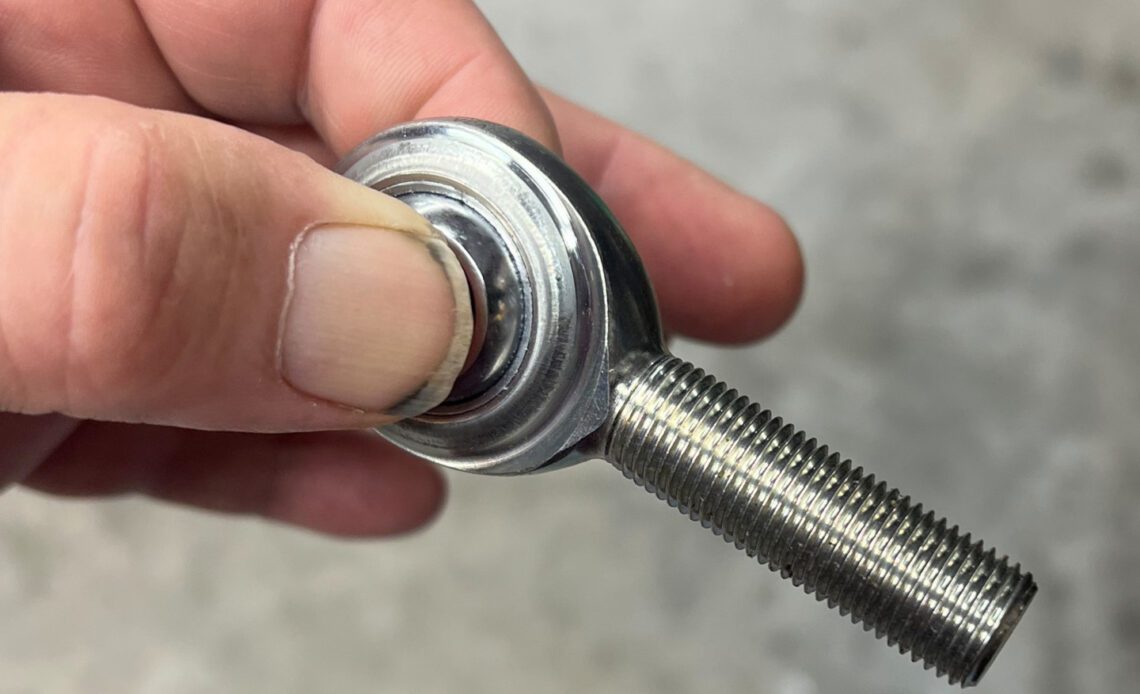When looking for rod end choices for a new project or to update used ones, the quality of your rod end bearing is based on the application. Start by asking yourself the right questions involving rod ends anywhere, from a simple throttle linkage to high-stress rod ends on your front and rear suspension.
Performing a vigorous “shake test” on standard rod ends without Teflon liners can be a good start to checking your rod ends. The tolerance has exceeded its usefulness if you feel a rattle as you shake. If you are checking PTFE/Teflon lined, it should require a firm grip to move the rod end’s ball around.
Observe the machine work that has gone into each rod end. “The wear life of seemingly similar bearings can vary greatly,” advises John McCrory with Aurora Bearing Company. “This can be due to design and manufacturing control, and often attributed to the make-up and installation of the PTFE liner.”
He continues, “That liner is wearable; for example, there is a big difference between parts store brake pads and proper high-performance brake pads. The same longevity applies to PTFE liners from different bearing manufacturers.”
Quality manufacturers such as Aurora Bearing offer in-depth catalogs illustrating intricate dimensions, misalignment, and strength specs concerning each rod end.
Judge For Yourself
First, look closely at the rod end. Examine the machine work that has gone into each component in the unit. You can also feel the race; is it smooth or rough? Same again with the ball, smooth or rough? In both cases, the smoother feel and surface finish — the better.
If you’re looking at a non-Teflon lined rod end, you can firmly hold the ball and shake the entire rod end. You can feel the clearances between the ball and the body. Does the rod end rattle, or does the bearing stick in the race? That is a good sign if the fitment seems to fit with precision.
If a Teflon liner is present, look closely for any Teflon liner damage. Are there gaps and pieces missing? It should be a continuous, properly fitting liner around the ball’s circumference. Unlike a non-Teflon lined rod end, the tolerance between the ball and housing should always be very “snug.” When manually moving it around with your fingers it should require some reasonable effort.
Suspension, steering, shifters, and carb linkages are just a few of the rod ends; some require high motion, some high strengths. Choosing the correct hardware and monitoring their life can be a…
Click Here to Read the Full Original Article at DragzineDragzine…

